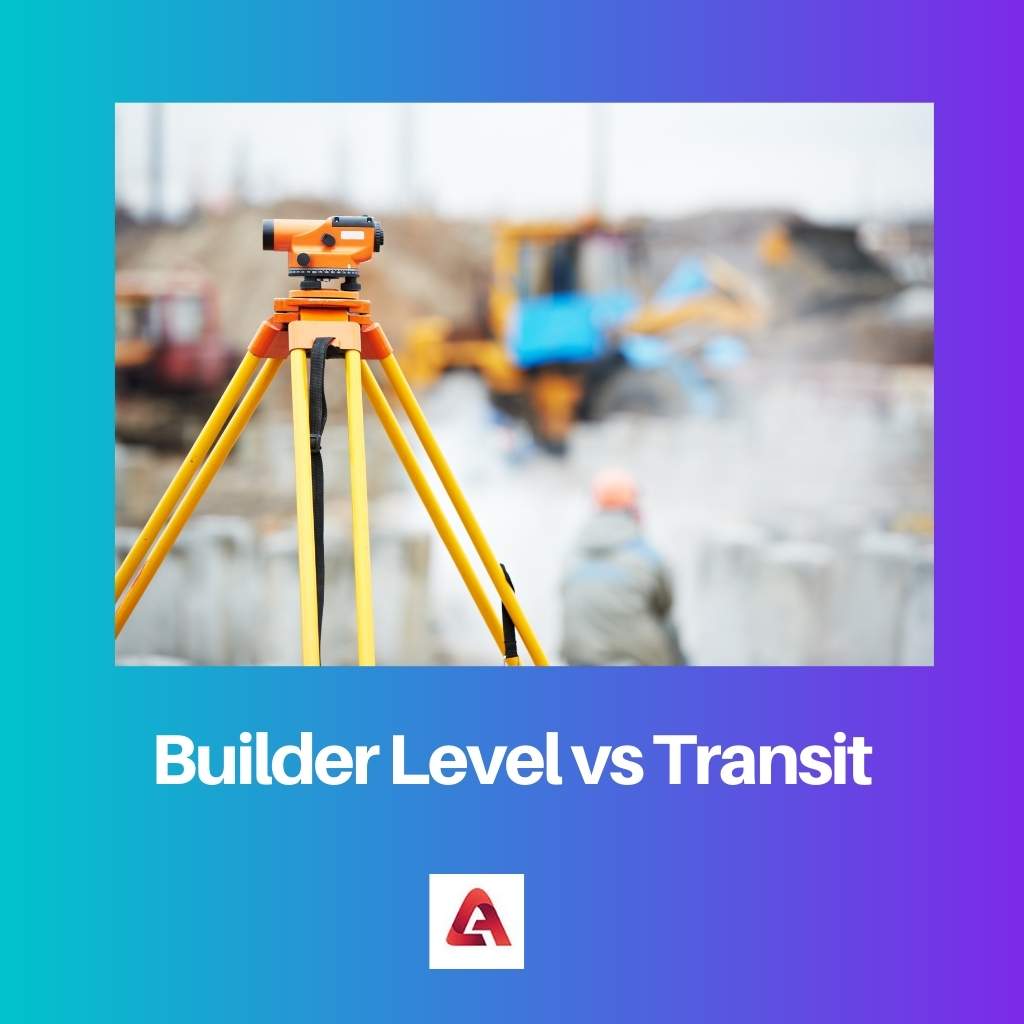Among all these various functionalities, builder level and transit are the two most common equipment for measuring levels.
Key Takeaways
- Builder levels measure horizontal levelness, while transits measure horizontal and vertical angles.
- Transits are more versatile and precise, allowing for complex measurements, whereas builder levels are simpler and best suited for straightforward levelling tasks.
- Builder levels use a bubble vial to find levelness, while transits utilize a telescope and graduated circle to measure angles.
Builder Level vs Transit
Builder level is an optical instrument used for measuring elevation in the construction field, and it consists of a levelling vial connected to a telescope. Transit is an optical instrument with an in=built level vial level and a telescope mounted on a tripod stand. It is used for surveying and building.

Before starting any project, it is necessary to use a builder level for measuring the high points and low points for various construction purposes.
On the other hand, the transit level has the additional functionality of measuring vertical angles.
Comparison Table
| Parameters of Comparison | Builder Level | Transit |
|---|---|---|
| Capability of measurement | It is capable of measuring elevation only. | Both elevation and vertical angles can be measured by it. |
| User friendliness | Due to its simple assembly, it is rather easy to use. | It has a comparatively complex design so it is not very easy to use. |
| Machine parts | It consists of two main parts Telescope and Level vial | It consists of four main parts Telescope, Level vial, Alidade, and Vernier scale. |
| Precision | Not known as a precise device. | Very good at precision. |
| Cost | It is lower in price and thus pocket friendly for limited purposes. | Due to increase in functionality, the price also goes up. |
| Usability | It is used in measuring high points and low points for the purpose of grading, leveling, etc. | It is mostly used for surveying and building by framers and excavators. |
What is Builder Level?
Builder Level is a simple optical instrument used in the field of construction for measuring elevation. The device mainly comprises a levelling vial that is fixed on a telescope.
The device is used for finding high and low points by attaching the telescope to a levelling head. This entire setup is mounted on a tripod.
The telescope at the builder level is used for magnifying distant objects, and it also rotates from 1 to 360 degrees, which are marked in a graduated circle.
One has to rotate the telescope and set it at a proper angle in the given range and the other person will stand at a distance and will measure the distance with a measuring rod.

What is Transit?
Transit is also an optical instrument similar to builder level, whose main part is the telescope. This device has an in-built level vial/ spirit level, and the telescope is mounted on a tripod stand.
In construction sites, it is used for surveying and building as the device determines the position of various lines and objects. Transit is very common among framers due to its high precision.
Along with the complete circular graduated scale that measures from 1 to 360 degrees, the transit also moves at an angle of 45 degrees vertically in either direction.
The spirit level is used to properly level the telescope, which is placed on the base of the transit level. There is another part of the transit, which is called alidade.
Since transit is capable of taking angular measurements, a Vernier scale is attached to the main scale.
Main Differences Between Builder Level and Transit
- Builder level is also lower in cost as compared to transit because of its easy assembly and simple usage.
- There are two parts at the builder level, namely, the telescope and the level vial. Transit has two more parts in addition to these, which are the alidade and Vernier scale.


The article presents a clear comparison between builder levels and transits. It’s crucial for professionals to understand the differences when selecting the appropriate equipment for their projects.
Totally agree. Having a deep understanding of these tools can significantly impact the quality and precision of work.
Absolutely. This kind of knowledge is indispensable in the construction industry.
Great article, definitely learned a lot about levels and transits. This is valuable information to bring to the construction field
I couldn’t agree more, Jacob. This is exactly the kind of content we need.
Let’s not forget that with the increasing availability of modern technology, GPS and laser leveling are becoming more popular options.
I think the post does a good job of explaining the differences between builder level and transit. However, I’d be interested in understanding more about how these instruments are actually used in the field.
I think there’s another article in the making here. Practical applications of builder level and transit in construction would be a great read.
Agree with you Sophie. It would be great to see a practical use guide of these tools in construction projects.
I disagree with the article’s claim that builder levels are not very precise. I’ve achieved excellent precision with them in my work.
Detailed and informative, the article does a good job of explaining the technical aspects of builder level and transit.
Absolutely, Isabella. It clears up a lot of confusion I’ve had regarding these tools.
Practical examples of these instruments in real-world construction scenarios would be a great addition to this article.
Great suggestion, Charles. It would enhance the article’s applicability to professionals in the field.
This article serves as a good refresher on builder levels and transits. It’s important to understand these tools and their capabilities in construction.